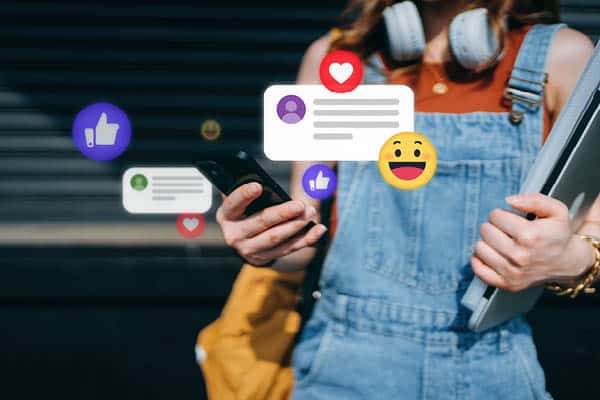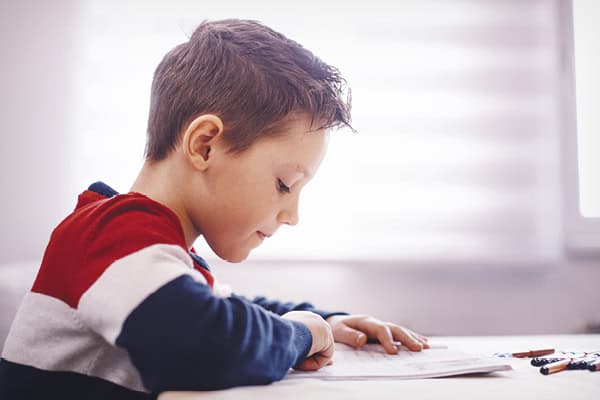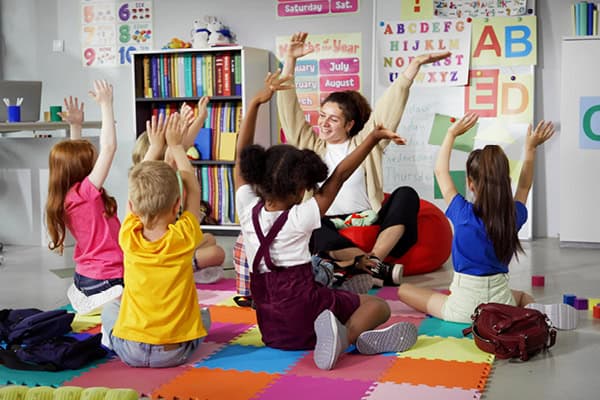Social media, generative artificial intelligence and other advances in digital technology are already dramatically influencing how kids develop social-emotional skills, according to Education Week.
This development comes as the share of teenagers who say they’re online “almost constantly” has roughly doubled since 2014-15, according to the Pew Research Center. A growing number of studies have also linked children’s use of smartphones and social media to their worsening mental, social and emotional well-being.
Four district leaders share here how their schools are teaching SEL skills they believe will help students navigate the increasingly digital and complex world they live in.
Long-lasting consequences
“A large part of what we’ve done is working to educate our families and educate our students about social media, about their digital reputation and the long-lasting consequences,” said Trish Shaffer, the multitiered systems of support and SEL coordinator for the 60,000-student Washoe district in Nevada.
SEL in the district—where 55 percent of students are on free or reduced-price meals—is taught through explicit instruction, some of which targets social media use, especially in middle and high schools, Shaffer said. SEL is also embedded into what teachers do regularly in the classroom at all grade levels, such as having an inclusive welcome at the beginning of every class and an intentional close at the end.
“Where it is developmentally appropriate, we’re trying to teach our parents and kids the same thing,” she said. “Maybe not teaching our kids how to shut down screen time but talking about ‘catfishing’ (when one pretends to be someone else by posting false information), making sure you research things, understanding what is posted lives on forever, understanding how it can significantly impact a peer’s mental health.”
Generative AI tools are still new, so the district is working on infusing those tech advances into existing SEL lessons on social media, Shaffer said. For now, the district is teaching its staff about AI and ensuring that they know how to be responsible, conscious consumers of AI tools.
Digital citizenship
The Pewaukee school district (WI) has had a digital-citizenship curriculum in place for years, “well before we saw an increase in the social-emotional needs of students,” said Danielle Bosanec, the chief academic officer for the 2,900-student district.
Guidance counselors provide SEL lessons in the classroom for K-8 students on a regular schedule, Bosanec said, while classroom teachers are trained on how to support student wellness.
For instance, Bosanec said the district is focusing on “lateral reading,” which is the practice of verifying what you’re reading by searching for other articles on the same topic by other writers. Students also learn about responsible social media use during lessons about building positive, healthy relationships.
In Hermiston (OR), the focus is on ensuring students not only have the knowledge but also the social-emotional skills they need for the future, said Tricia Mooney, the superintendent of the 5,500-student district.
Mooney said: “No matter what happens with technology, if our students know how to collaborate with one another, think through problems, and communicate with each other, they’re going to be able to navigate whatever gets thrown at them.”
When students are struggling with using digital tools while in school, educators ask students to take a break from the resources and reteach appropriate skills, Mooney said.
Teachers have professional learning communities and instructional coaches who help them embed those principles into their daily practice.
To continue the learning at home, the district hosts seminars and provides information to parents about what to look for and how to support their children’s well-being online.
When it’s important to put [technology] down
The San Ramon Valley (CA) school system uses a combination of SEL curriculum, counselor activities in the classroom, specific dialogues with students, and connections with parents to ensure students have the social-emotional skills they need to navigate the digital world, says John Malloy, the superintendent of the 30,000-student district.
“We teach our kids that there is a time and place for the use of technology and social media, which means that there are times when it’s important to put it down,” Malloy said.
Each school has a team of educators and support staff who keep up with the academic, social, and emotional needs of the students and ensure that students are learning what healthy use looks like, Malloy said.
The district is also thinking about how students can assist each other in making healthy decisions. “Peers learn from each other very effectively,” Malloy said, “as long as there’s a trusted adult facilitating in some way.”
Educating parents is also important because they are “on a continuum of how they allow their students to use technology and social media,” Malloy said. The district has started parent information nights, where parents bring their questions and the district provides speakers or lessons to address those questions.
Education Week






